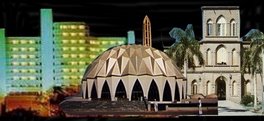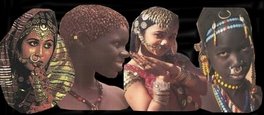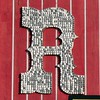
alnilin mosque

sudan clothing

sudan singers
Education in sudan
The public and private education systems inherited by the government after independence were designed more to provide civil servants and professionals to serve the colonial administration than to educate the Sudanese. Moreover, the distribution of facilities, staff, and enrollment was biased in favor of the needs of the administration and a Western curriculum. Schools tended to be clustered in the vicinity of Khartoum and to a lesser extent in other urban areas, although the population was predominantly rural. This concentration was found at all levels but was most marked for those in situations beyond the four-year primary schools where instruction was in the vernacular. The north suffered from shortages of teachers and buildings, but education in the south was even more inadequate. During the condominium, education in the south was left largely to the mission schools, where the level of instruction proved so poor that as early as the mid-1930s the government imposed provincial education supervisors upon the missionaries in return for the government subsidies that they sorely needed. The civil war and the ejection of all foreign missionaries in February 1964 further diminished education opportunities for southern Sudanese.
Traditionally, girls' education was of the most rudimentary kind, frequently provided by a khalwa, or religious school, in which Quranic studies were taught. Such basic schools did not prepare girls for the secular learning mainstream, from which they were virtually excluded. Largely through the pioneering work of Shaykh Babikr Badri, the government had provided five elementary schools for girls by 1920. Expansion was slow, however, given the bias for boys and the conservatism of Sudanese society, with education remaining restricted to the elementary level until 1940. It was only in 1940 that the first intermediate school for girls, the Omdurman Girls' Intermediate School, opened. By 1955, ten intermediate schools for girls were in existence. In 1956, the Omdurman Secondary School for Girls, with about 265 students, was the only girls' secondary school operated by the government. By 1960, 245 elementary schools for girls had been established, but only 25 junior secondary or general schools and 2 upper-secondary schools. There were no vocational schools for girls, only a Nurses' Training College with but eleven students, nursing not being regarded by many Sudanese as a respectable vocation for women. During the 1960s and 1970s, girls' education made considerable gains under the education reforms that provided 1,086 primary schools, 268 intermediate schools, and 52 vocational schools for girls by 1970, when girls' education claimed approximately one-third of the total school resources available. Although by the early 1990s the numbers had increased in the north but not in the war-torn south, the ratio had remained approximately the same.
The revolutionary government of General Bashir announced sweeping reforms in Sudanese education in September 1990. In consultation with leaders of the Muslim Brotherhood and Islamic teachers and administrators, who were the strongest supporters of his regime, Bashir proclaimed a new philosophy of education. He allocated £Sd400 million for the academic year 1990-91 to carry out these reforms and promised to double the sum if the current education system could be changed to meet the needs of Sudan.
Thursday, March 29, 2007
music2
music
Religion
According to The World Factbook, the primary religions of Sudan are Muslim(approx. 70%), Christianity(approx. 5%) and traditional indigenous religions(approx. 25%). Sunni Muslims predominate in the north, while the south contains most of the followers of Christianity and traditional indigenous religions (animists).[1]
- Main article: Islam in Sudan
In the early 1990s, the largest single category among the Muslim peoples of Sudan consisted of those speaking some form of Arabic. Excluded were a small number of Arabic speakers originating in Egypt and professing Coptic Christianity. In 1983 the people identified as Arabs constituted nearly 40 percent of the total Sudanese population and nearly 55 percent of the population of the northern provinces. In some of these provinces (Al Khartum, Ash Shamali, Al Awsat), they were overwhelmingly dominant. In others (Kurdufan, Darfur), they were less so but made up a majority. By 1990 Ash Sharqi State was probably largely Arab. It should be emphasized, however, that the acquisition of Arabic as a second language did not necessarily lead to the assumption of Arab identity.
In the early 1990s, the Nubians were the second most significant Muslim group in Sudan, their homeland being the Nile River valley in far northern Sudan and southern Egypt. Other, much smaller groups speaking a related language and claiming a link with the Nile Nubians have been given local names, such as the Birqid and the Meidab in Darfur State. Almost all Nile Nubians speak Arabic as a second language.
[edit] Christianity
Christianity was most prevalent among the peoples of Al Istiwai State--the Madi, Moru, Azande, and Bari. The major churches in the Sudan were the Catholic and the Anglican. Southern communities might include a few Christians, but the rituals and world view of the area were not in general those of traditional Western Christianity. The few communities that had formed around mission stations had disappeared with the dissolution of the missions in 1964. The indigenous Christian churches in Sudan, with external support, continued their mission.
[edit] Indigenous religions
Each indigenous religion is unique to a specific ethnic group or part of a group, although several groups may share elements of belief and ritual because of common ancestry or mutual influence. The group serves as the congregation, and an individual usually belongs to that faith by virtue of membership in the group. Believing and acting in a religious mode is part of daily life and is linked to the social, political, and economic actions and relationships of the group. The beliefs and practices of indigenous religions in Sudan are not systematized, in that the people do not generally attempt to put together in coherent fashion the doctrines they hold and the rituals they practice.
Ethnicity sudan
In 1999, Sudan was one of the most ethnically and linguistically diverse countries in the world. It had nearly 600 ethnic groups speaking over 400 languages and dialects.
During the 1980s and 1990s some of Sudan's smaller ethnic and linguistic groups disappeared. Migration played a part, as migrants often forget their native tongue when they move to an area dominated by another language. Some linguistic groups were absorbed by accommodation, others by conflict.
Arabic was the lingua franca despite the use of English by many of the elite. Many Sudanese are multilingual.sudan culture
HISTORY
Pprehistory
Archaeological excavation of archaeological sites on the Nile above Aswan has confirmed human habitation in the river valley during the Paleolithic period that spanned more than 60,000 years of Sudanese history. A prehistoric burial discovered in northern Sudan reveals what is believed to be the world's earliest indication of warfare, dating to the 12th millennium BC [1]. By the eighth millennium B.C., people of a Neolithic culture had settled into a sedentary way of life there in fortified mud-brick villages, where they supplemented hunting and fishing on the Nile with grain gathering and cattle herding. Anthropological and archaelogical research indicate that during the predynastic period Nubia and Nagadan Upper Egypt were ethnically, and culturally nearly identical, and thus, simultaneously evolved systems of pharaonic kingship by 3300 BC. [2] But during the close of the Nagada III period, Nagada, in its bid to conquer and unify the whole nile valley, seems to have conquered their southern neighbors and thus, "egyptianized" them. [3]. The result appears to have been the depopulation of the entire Lower Nubian area, either by the genocidal efforts of the First Dynasty Egyptian kings, or by the migration (forced or voluntary) of the nubians to areas north and south.
Kush
- Main article: Kush
Northern Sudan's earliest historical record comes from Egyptian sources, which described the land upstream from the First Cataract, called Kush, as "wretched." For more than 2,000 years after the Old Kingdom (ca. 2700-2180 B.C.), Egyptian political and economic activities determined the course of the central Nile region's history. Even during intermediate periods when Egyptian political power in Kush waned, Egypt exerted a profound cultural and religious influence on the Kushite people.
Over the centuries, trade developed. Egyptian caravans carried grain to Kush and returned to Aswan with ivory, incense, hides, and carnelian (a stone prized both as jewelry and for arrowheads) for shipment downriver. Egyptian traders particularly valued gold and slaves, who served as domestic servants, concubines, and soldiers in the pharaoh's army. Egyptian military expeditions penetrated Kush periodically during the Old Kingdom. Yet there was no attempt to establish a permanent presence in the area until the Middle Kingdom (ca. 2100-1720 B.C.), when Egypt constructed a network of forts along the Nile as far south as Samnah, in southern Egypt, to guard the flow of gold from mines in Wawat.
Around 1720 B.C., Asian nomads called Hyksos invaded Egypt, ended the Middle Kingdom, severed links with Kush, and destroyed the forts along the Nile River. To fill the vacuum left by the Egyptian withdrawal, a culturally distinct indigenous kingdom emerged at Karmah, near present-day Dunqulah. After Egyptian power revived during the New Kingdom (ca. 1570-1100 B.C.), the pharaoh Ahmose I incorporated Kush as an Egyptian province governed by a viceroy. Although Egypt's administrative control of Kush extended only down to the fourth cataract, Egyptian sources list tributary districts reaching to the Red Sea and upstream to the confluence of the Blue Nile and White Nile rivers. Egyptian authorities ensured the loyalty of local chiefs by drafting their children to serve as pages at the pharaoh's court. Egypt also expected tribute in gold and slaves from local chiefs.
Once Egypt had established political control over Kush, officials and priests joined military personnel, merchants, and artisans and settled in the region. The Egyptian language became widely used in everyday activities. The Kushite elite adopted Egyptian gods and built temples like that dedicated to the sun god Amon at Napata, near present-day Kuraymah. The temples remained centers of official religious worship until the coming of Christianity to the region in the sixth century. When Egyptian influence declined or succumbed to foreign domination, the Kushite elite regarded themselves as champions of genuine Egyptian cultural and religious values.
By the eleventh century B.C., the authority of the New Kingdom dynasties had diminished, allowing divided rule in Egypt, and ending Egyptian control of Kush. There is no information about the region's activities over the next 300 years. In the eighth century B.C., however, Kush reemerged as an independent kingdom ruled from Napata by an aggressive line of monarchs who gradually extended their influence into Egypt. About 750 B.C., a Kushite king called Kashta conquered Upper Egypt and became ruler of Thebes until approximately 740 B.C. His successor, Piankhy, subdued the delta, reunited Egypt under the Twenty-fifth Dynasty, and founded a line of kings who ruled Kush and Thebes for about a hundred years. The dynasty's intervention in the area of modern Syria caused a confrontation between Egypt and Assyria. When the Assyrians in retaliation invaded Egypt, Taharqa (688-663 B.C.), the last Kushite pharaoh, withdrew and returned the dynasty to Napata, where it continued to rule Kush and extended its dominions to the south and east.Kush was known as the mother of gold.
Meroe
- Main article: Meroë
Egypt's succeeding dynasty failed to reassert control over Kush. In 590 B.C., however, an Egyptian army sacked Napata, compelling the Kushite court to move to a more secure location at Meroe near the Sixth Cataract. For several centuries thereafter, the Meroitic kingdom developed independently of Egypt, which passed successively under Persian, Greek, and, finally, Roman domination. During the height of its power in the second and third centuries B.C., Meroe extended over a region from the third cataract in the north to Sawba, near present-day Khartoum, in the south.
The pharaonic tradition persisted among a line of rulers at Meroe, who raised stelae to record the achievements of their reigns and erected pyramids to contain their tombs. These objects and the ruins of palaces, temples, and baths at Meroe attest to a centralized political system that employed artisans' skills and commanded the labor of a large work force. A well-managed irrigation system allowed the area to support a higher population density than was possible during later periods. By the first century B.C., the use of hieroglyphs gave way to a Meroitic script that adapted the Egyptian writing system to an indigenous, Nubian-related language spoken later by the region's people. Meroe's succession system was not necessarily hereditary; the matriarchal royal family member deemed most worthy often became king. The queen mother's role in the selection process was crucial to a smooth succession. The crown appears to have passed from brother to brother (or sister) and only when no siblings remained from father to son.
Although Napata remained Meroe's religious center, northern Kush eventually fell into disorder as it came under pressure from the Blemmyes, predatory nomads from east of the Nile. However, the Nile continued to give the region access to the Mediterranean world. Additionally, Meroe maintained contact with Arab and Indian traders along the Red Sea coast and incorporated Hellenistic and Hindu cultural influences into its daily life. Inconclusive evidence suggests that metallurgical technology may have been transmitted westward across the savanna belt to West Africa from Meroe's iron smelteries.
Relations between Meroe and Egypt were not always peaceful. In 23 B.C., in response to Meroe's incursions into Upper Egypt, a Roman army moved south and razed Napata. The Roman commander quickly abandoned the area, however, as too poor to warrant colonization.
In the second century A.D., the Nobatae occupied the Nile's west bank in northern Kush. They are believed to have been one of several well-armed bands of horse- and camel-borne warriors who sold protection to the Meroitic population; eventually they intermarried and established themselves among the Meroitic people as a military aristocracy. Until nearly the fifth century, Rome subsidized the Nobatae and used Meroe as a buffer between Egypt and the Blemmyes. Meanwhile, the old Meroitic kingdom contracted because of the expansion of the powerful Ethiopian Kingdom of Aksum to the east. By A.D. 350, King Ezana of Axum had captured and destroyed Meroe city, ending the kingdom's independent existence, and conquering its territory into modern-day southern Egypt.Meroe was considered a wheel because all trade routes led to meroe.

![[Pyramids from the Northern Cemetery at Meroe]](http://www.hp.uab.edu/image_archive/um/pyramid01-th.jpg)
![[Ruins of Merotic temple at Musawwarat es-Sufra]](http://www.hp.uab.edu/image_archive/um/architecture04-th.jpg)
![[Elephant statue from the Great Enclosure at Musawwarat es-Sufra temple]](http://www.hp.uab.edu/image_archive/um/architecture05-th.jpg)
![[Queen Shanadakhete's inscription]](http://www.hp.uab.edu/image_archive/um/relief06-th.jpg)
![[Queen Amanirenas' stele]](http://www.hp.uab.edu/image_archive/um/inscription01-th.jpg)
![[Relief from a stand at Wad Ban Naga temple showing Queen Amanitare, wife Natakamani]](http://www.hp.uab.edu/image_archive/um/relief04-th.jpg)
![[Relief from the Lion Temple at Naga, south of Meroe]](http://www.hp.uab.edu/image_archive/um/relief05-th.jpg)
![[Kiosk at Naga, South of Meroe]](http://www.hp.uab.edu/image_archive/um/architecture06-th.jpg)
![[The Lion Temple of Naqa, Meroe]](http://www.hp.uab.edu/image_archive/um/architecture07-th.jpg)
![[Rear view of the Lion Temple, Naqa, Mero. Relief of Apedemek]](http://www.hp.uab.edu/image_archive/um/architecture08-th.jpg)
![[Apedemek from the Lion Temple, Naqa, Meroe]](http://www.hp.uab.edu/image_archive/um/name01-th.jpg)
![[Ba statue of a woman, Meroe]](http://www.hp.uab.edu/image_archive/um/statue07-th.jpg)
![[Gold jackal. Mero]](http://www.hp.uab.edu/image_archive/um/gold01-th.jpg)
![[Bronze vessels from Merotic graves at Faras]](http://www.hp.uab.edu/image_archive/um/bronze04-th.jpg)
![[Redware amphora from a Merotic grave at Faras]](http://www.hp.uab.edu/image_archive/um/pottery11-th.jpg)
![[Burnished black ware from Meroe]](http://www.hp.uab.edu/image_archive/um/pottery09-th.jpg)
![[Decorated Merotic cups from Faras]](http://www.hp.uab.edu/image_archive/um/pottery10-th.jpg)
![[Ring flask from a Merotic grave at Faras]](http://www.hp.uab.edu/image_archive/um/pottery08-th.jpg)
![[Meroitic utility redware from a grave at Faras]](http://www.hp.uab.edu/image_archive/um/pottery12-th.jpg)
![[Tomb of a Merotic aristocrat at Faras]](http://www.hp.uab.edu/image_archive/um/tomb01-th.jpg)










